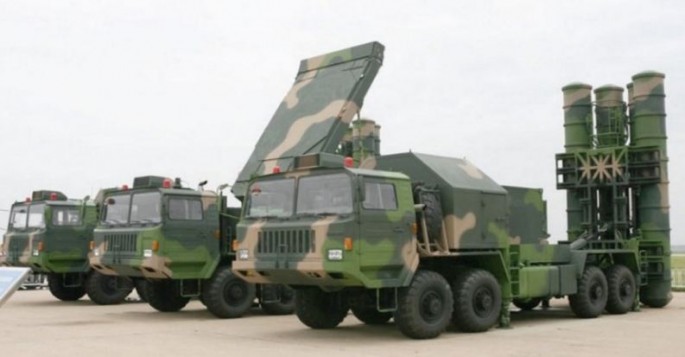China is escalating its preparations for war and is close to completing the construction of some two dozen covered emplacements protecting its surface-to-air missile (SAM) batteries on its seven man-made and militarized islands in the South China Sea.
American media reports U.S. government officials as saying the new emplacements have retractable roofs that open to allow truck mounted SAMs such as the HQ-9 to fire. HQ-9 batteries are known to have been emplaced on Woody Island, the largest of the Paracel Islands (also claimed by Vietnam) in the South China Sea.
A typical HQ-9 battery consists of one Type 305B search radar; one tracking radar; one 200 kW Diesel generator truck and eight Transporter Erector Launchers (TELs), each with 4 missiles for a total of 32 missiles ready to fire. This hardware is usually mounted on Taian TA580/TAS5380 trucks.
The HQ-9 missile has a slant range of 200 km and carries a 180 kg warhead.
Military analysts said the new protected emplacements can be considered a military escalation by China. This escalation effectively challenges the anti-China Donald Trump to respond.
"This is part of their effort to eventually control that First Island Chain in the South China Sea and assert their claim, even though they have been completely repudiated by the Permanent Court of Arbitration in The Hague, based on the Law of the Sea Treaty, of which they are a member," said Robert Manning, a senior fellow at the Atlantic Council.
Other analysts say this new development is another step in China's recent attempts to further militarize the islands by building facilities for storing weapons and military equipment.
In December 2016, China admitted to deploying short-range air defense weapons, including anti-aircraft artillery, to the disputed Spratly Islands.
The Center for Strategic and International Studies in Washington in December released images of the new fortifications through its Asia Maritime Transparency Initiative (AMTI). The images showed "large antiaircraft guns and probable close-in weapons systems," meant to engage cruise missile.
AMTI said the reinforcement shows that Beijing "is serious about defense of its artificial islands in case of an armed contingency in the South China Sea.



























